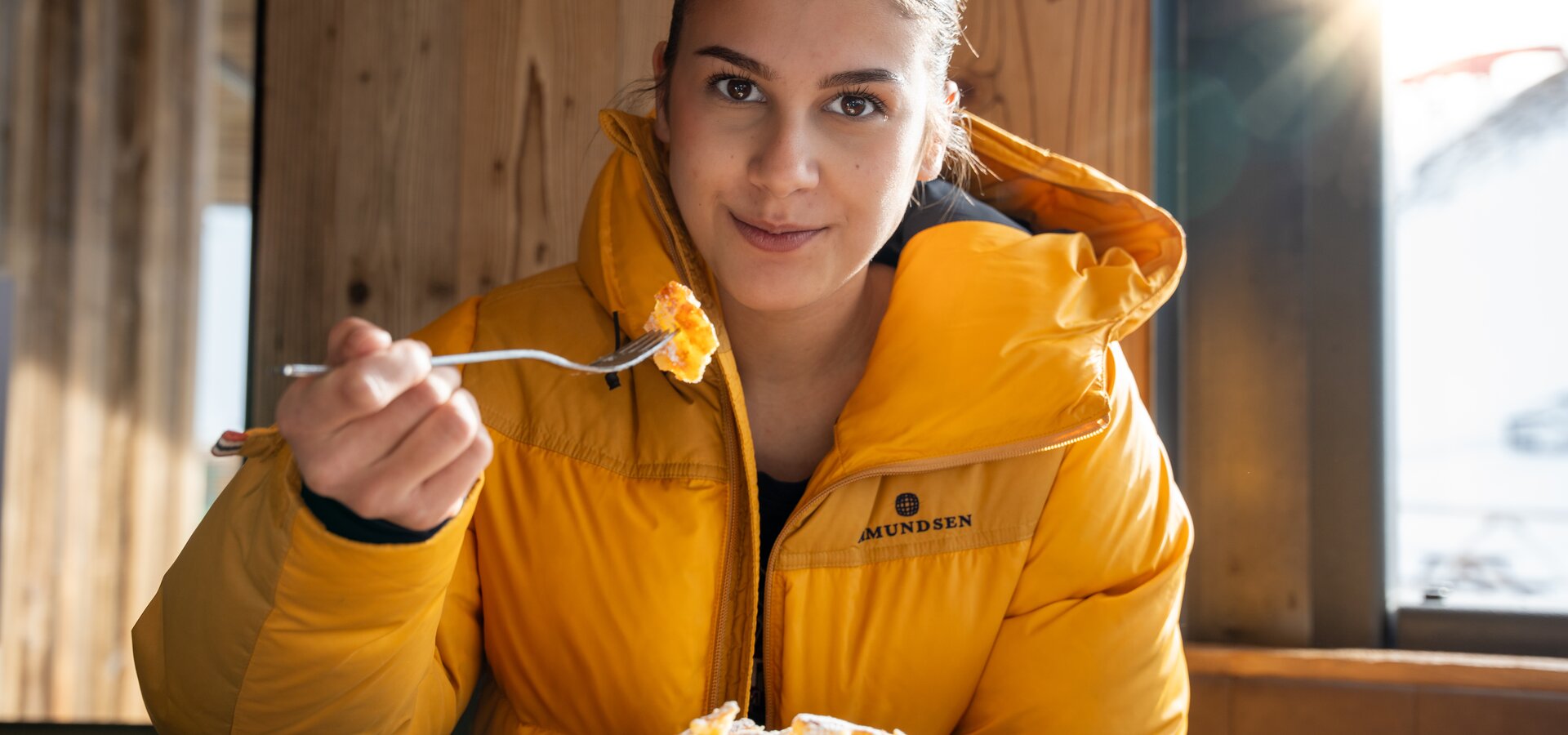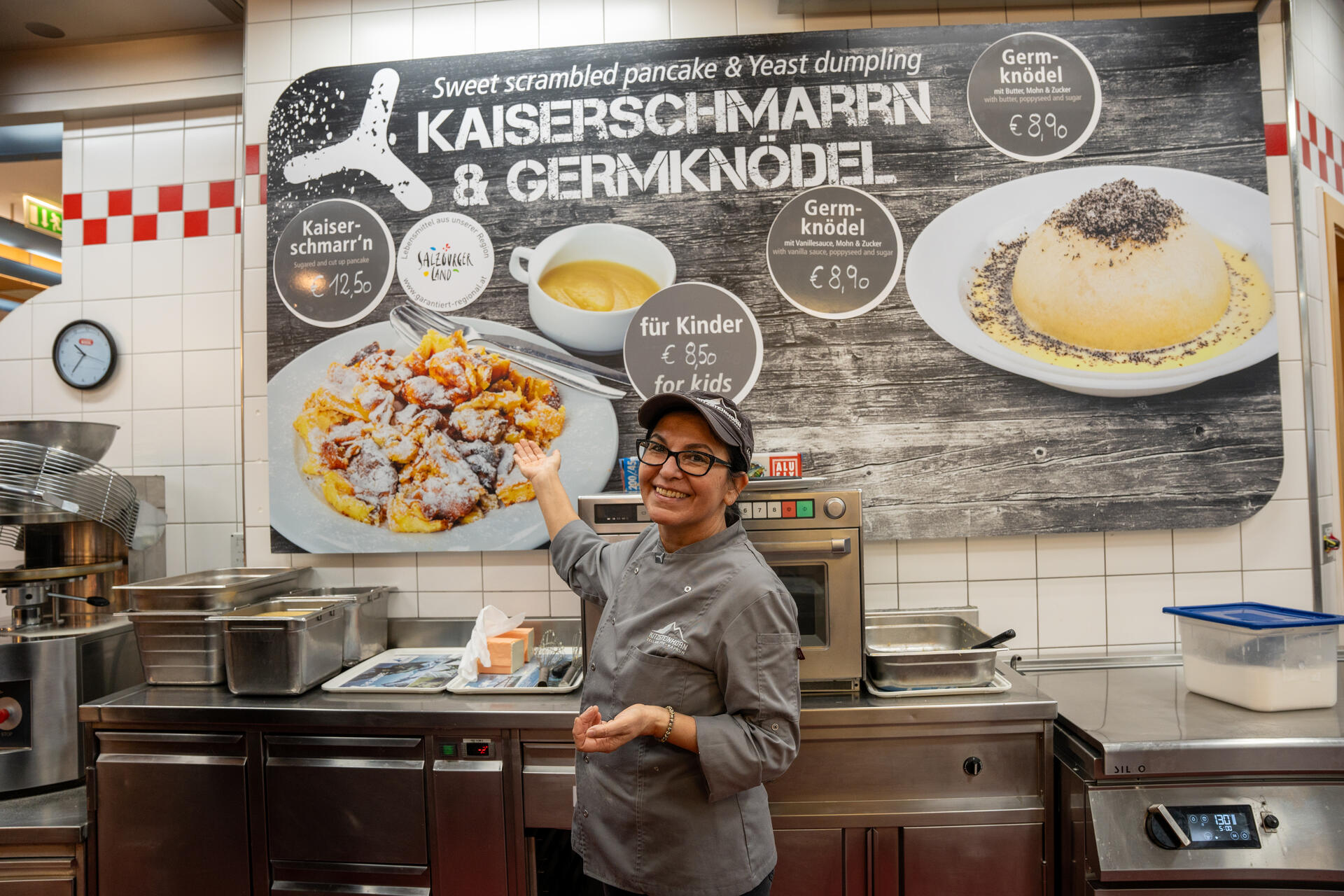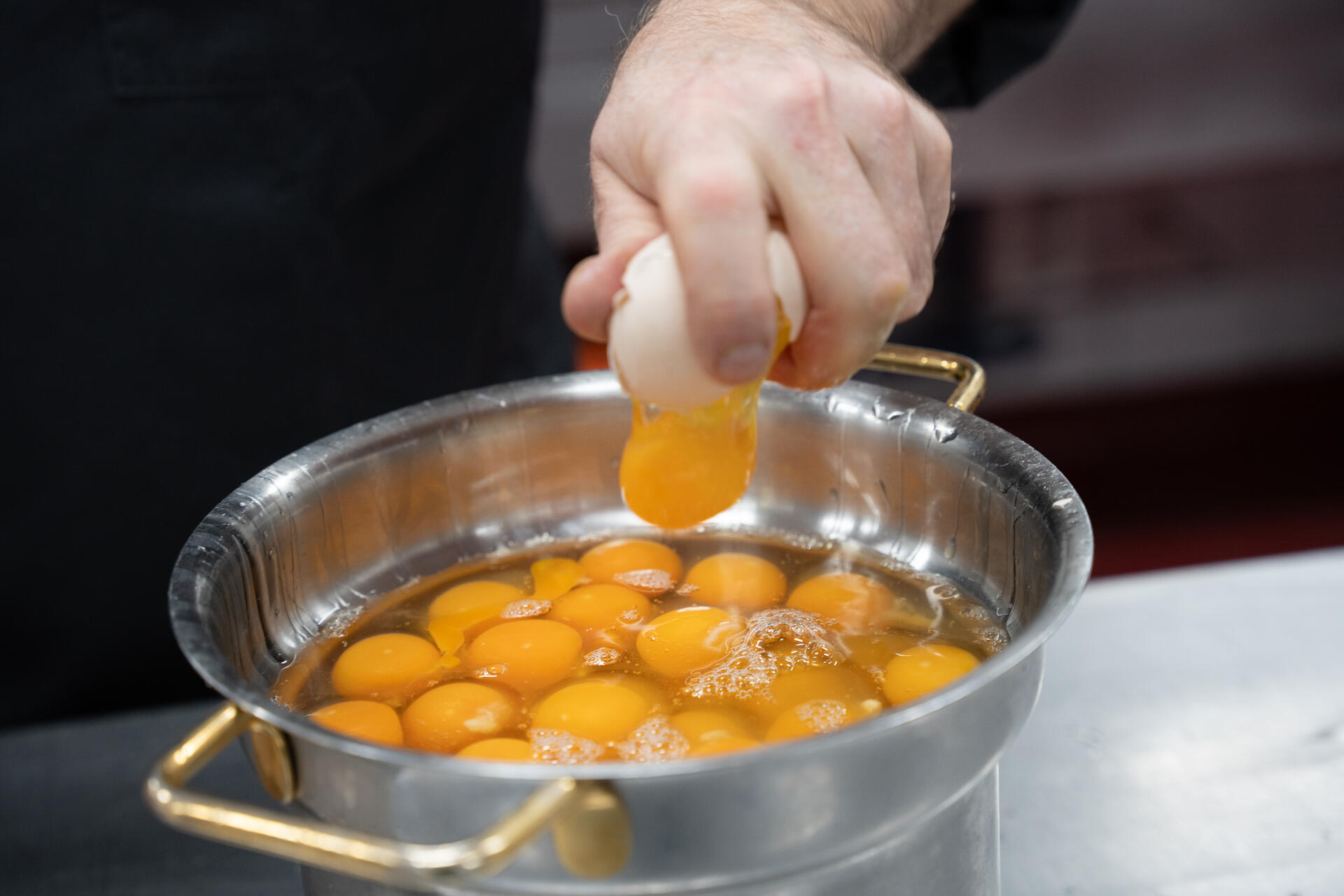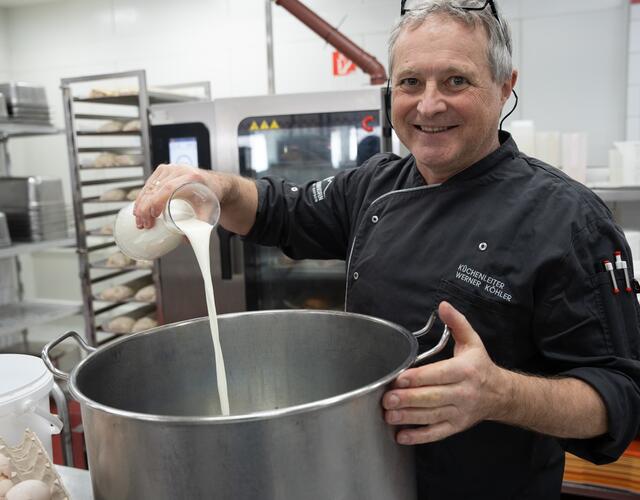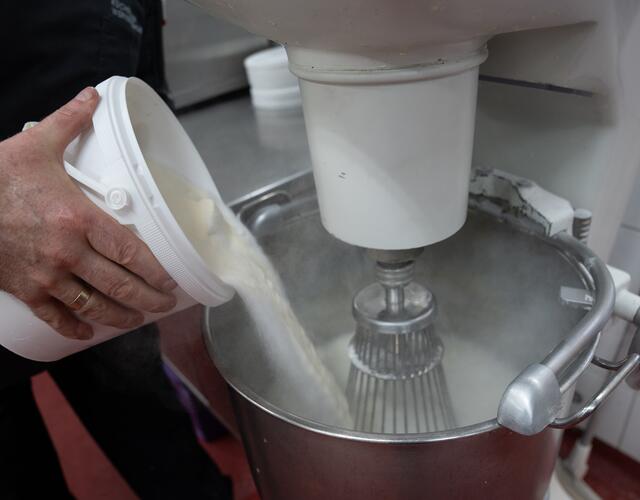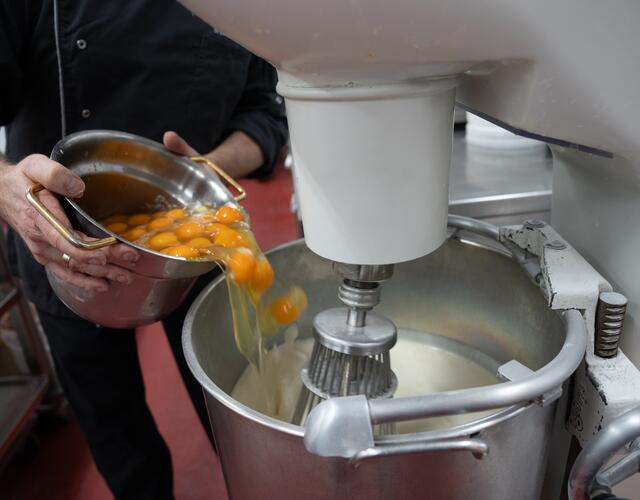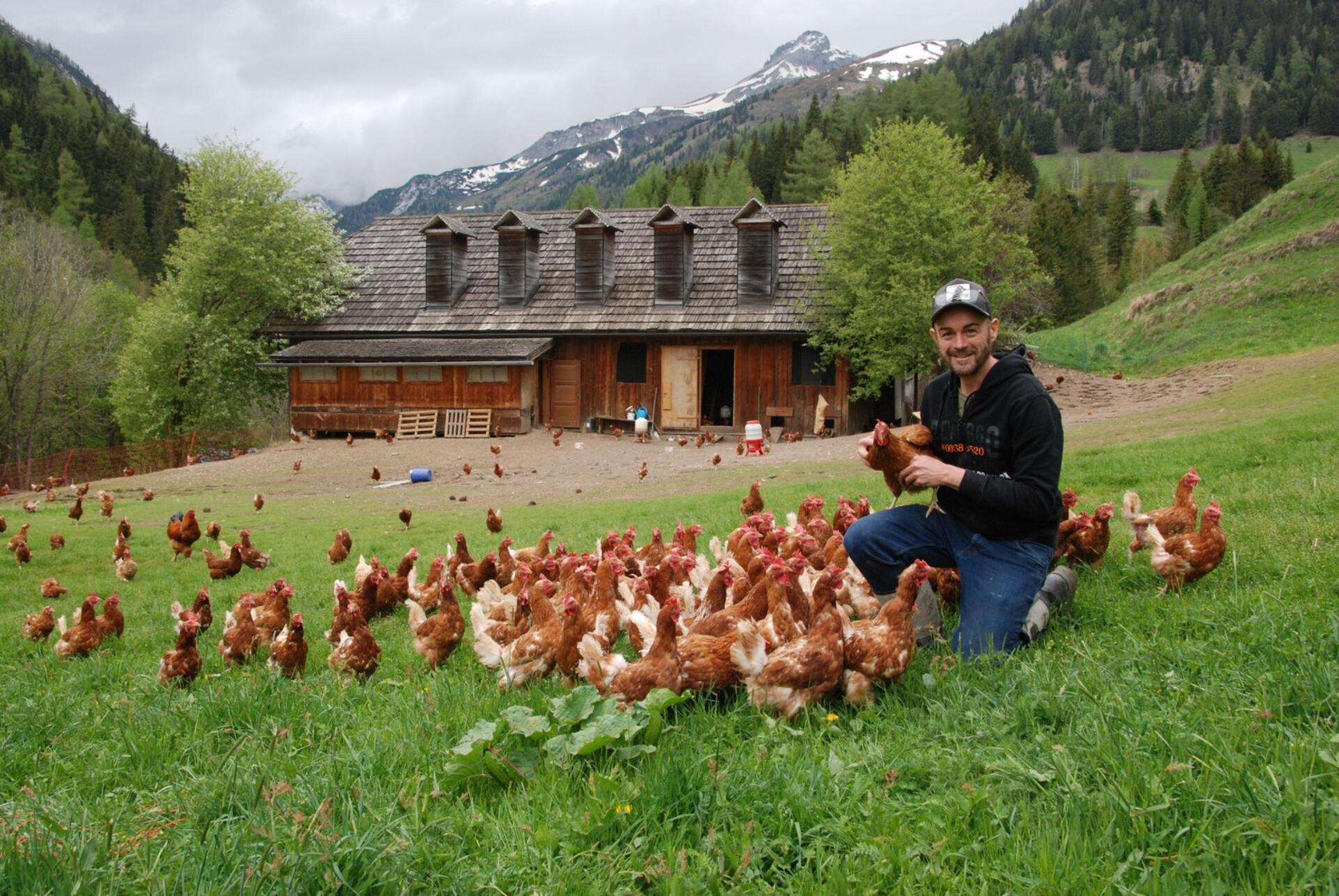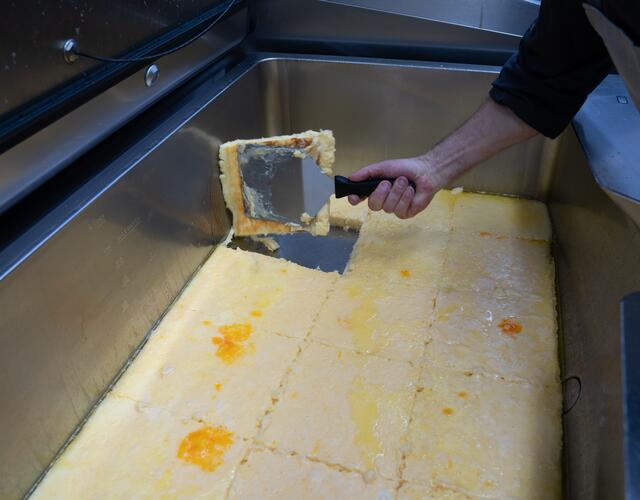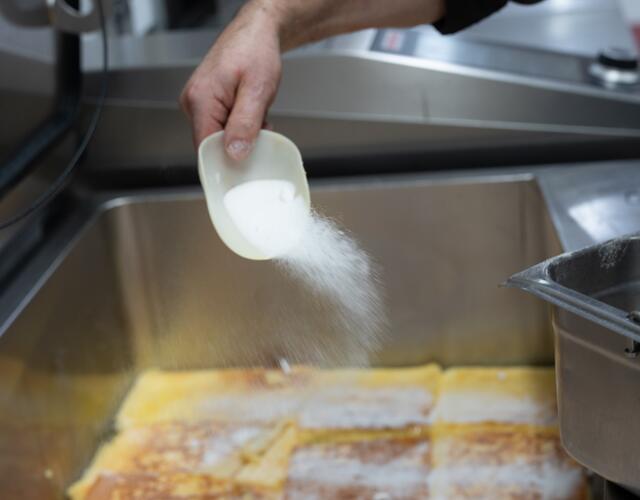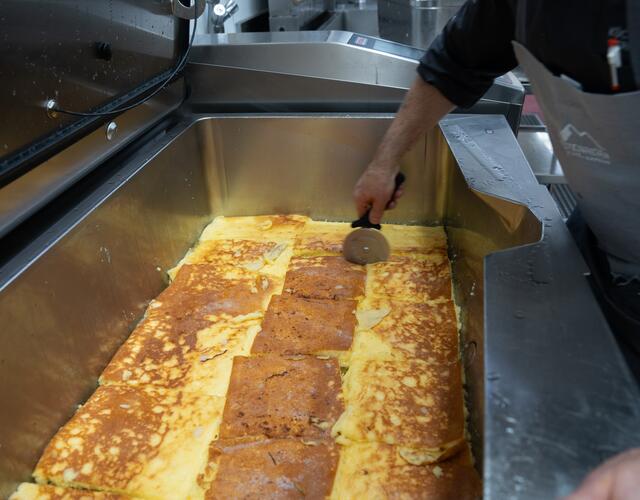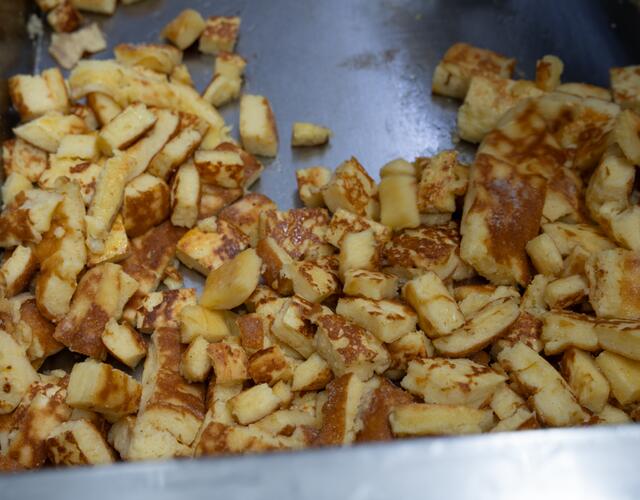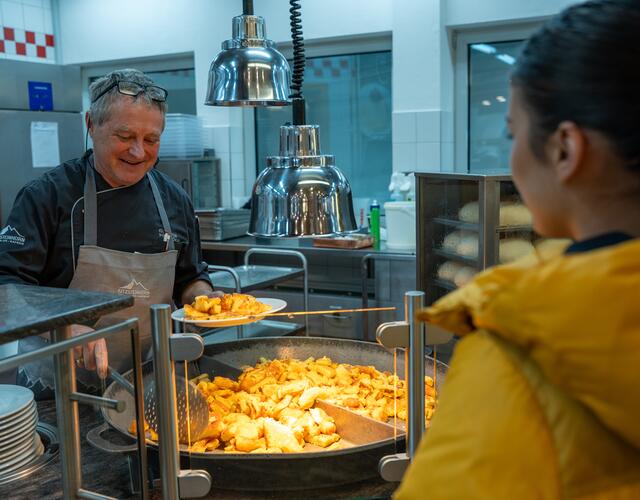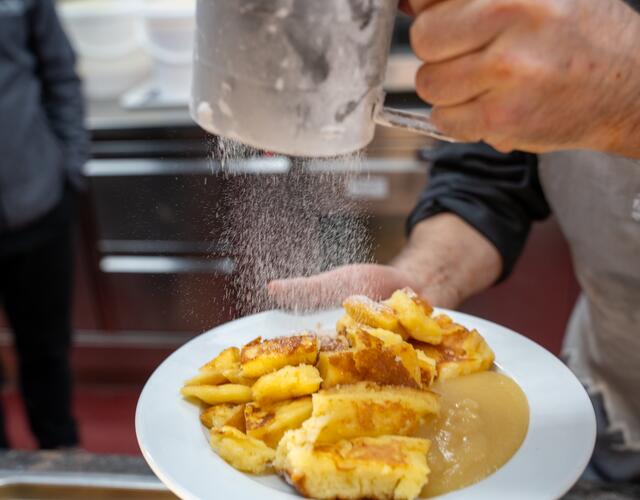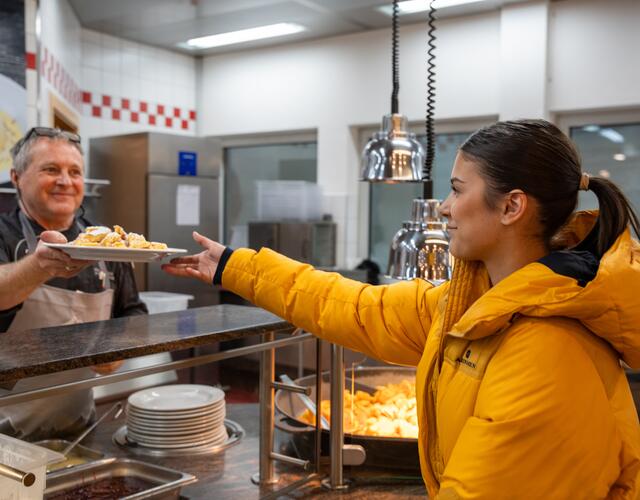Local ingredients and fresh preparation are the key to the sweet hut classic
Sweet, fluffy, slightly caramelized and deliciously smelling – the popular hut classic from the Austrian pastry kitchen instantly evokes happy memories of the last ski trip. Head chef at the Alpincenter Werner Koehler reveals, what makes his Kaiserschmarrn so wonderfully fluffy and how important local products and fresh preparation are to him.
Most popular hut dish "Kaiserschmarrn"
Winter sports enthusiasts anticipate it just as much as making turns on powdery snow runs – stopping off at a restaurant or hut along the slope for a delicious meal and leisurely drinks. And among the most popular hut dishes in Austria ranks the Kaiserschmarrn – a big, super-soft pancake that’s cut into bite-sized pieces and served with plum compote or apple purée. And on the Kitzsteinhorn, guests can enjoy the sweet delicacy with clear conscience, for all main ingredients are supplied by local producers.
Werner Koehler has been working in the Alpincenter kitchen for over ten years. The experienced chef explains: "Here, 2,450 meters above sea level, we not only cook for our modern self-service restaurant with free flow buffet, but also prepare dishes for our table-serviced restaurant, the Gletschermuehle, and supply our Gipfel Restaurant with pastries from our in-house bakery. That requires both good logistics and a well-coordinated team."
We're proud to cook with high-quality local products.
Fast slow food
The whole free flow buffet area is already smelling delicious from all kinds of yummy dishes: the Groestl with fried egg, pasta, pizza, salads and, of course, the Kaiserschmarrn. A short line has formed while portion after portion is being served to hungry skiers that cannot wait to take a bite of the sweet treat. "What's the secret behind the fluffiness?", we want to know from Werner Koehler who, without further ado, invites us to accompany him into the kitchen to take a sneak peek of how the Kaiserschmarrn is made.
In calm lies fluffiness
"The secret is, on the one hand, good, local ingredients. We use SalzburgerLand eggs from the Waldhof Koesslergut farm in Lungau and fresh, whole milk from the Pinzgau Milch dairy. Plus, we cook fresh and do without any kind of stabilizers and additives in all of our restaurants. On the other hand, it's all about time; time we devote to preparing our dishes. Winter sports fans have no time to lose at our self-service areas since they want to head back onto the slopes as quickly as possible, but that doesn't affect preparation. We give our dishes time – the soup, for instance, is happily left to simmer overnight, the dough left to rise for an appropriate amount of time. Our Kaiserschmarrn mixture needs a certain amount of time to rest, too."
Highest quality in the mass
The eggs are cracked by hand and added to the mixture of milk, flour, sugar and vanilla sugar. "We add the eggs at the very end for they shouldn’t be beaten too much in order to maintain their texture. That's what ultimately gives the Kaiserschmarrn its fluffy consistency. Afterwards, the dough is left to rise in the cold room, giving the flour enough time to bind with the milk and eggs." The chef grabs a dough that has already rested and leads us to a large tilting skillet. "Making several portions of Kaiserschmarrn in the large tilting skillet works just the same as making one portion in the small pan. There's also no difference in flavor, satisfying the great demand at lunchtime therefore poses no problem for us. After the dough has been covered and browned on moderate heat on one side, I flip it over on the other. To do so, I cut it into large pieces to be able to gently flip them with a spatula. Then, after having evenly spread some sugar over the surface, it's covered and slowly caramelized. That, in turn, takes time – which we happily allow."
While we're waiting, Werner Koehler tells us about where the eggs come from: "We source our eggs for the Kaiserschmarrn as well as for our Tiroler Groestl, our bakery and other dishes from the Waldhof Koesslergut farm in Lungau. These free-range eggs guarantee sustainability, locality and highest animal welfare. Max Prodinger keeps his feathered ladies in small herds with a couple of roosters in Zederhaus. In the small Lungau community, he is affectionately known as "chicken daddy", since he allows retired laying hens happy golden years – they may lay as many eggs as they want to on the Koesslergut farm."
Tearing to pieces
Now it's time to wake the Kaiserschmarrn from its beauty sleep. We open the pan and are instantly wrapped in a cloud of scent. Even people who don't have a sweet tooth will get hungry for this winter sports fans' favorite dish. "With a little portion, we'd tear the Kaiserschmarrn into pieces with a traditional 'muasa' spatula. With this large amount it’s more efficient to use a pizza cutter", announces the kitchen pro and creates bite-sized pieces in no time. The sweet replenishment is lifted out of the pan and delivered to the free flow buffet without delay, where it immediately lands on the plates together with plum compote or apple purée and topped with powdered sugar.
A taste of the Kaiserschmarrn confirms: This sweet delicacy has been prepared with lots of time, love and fresh ingredients. A simple taste therefore isn't enough – we head right back to the buffet to have a large portion loaded onto our plate.

